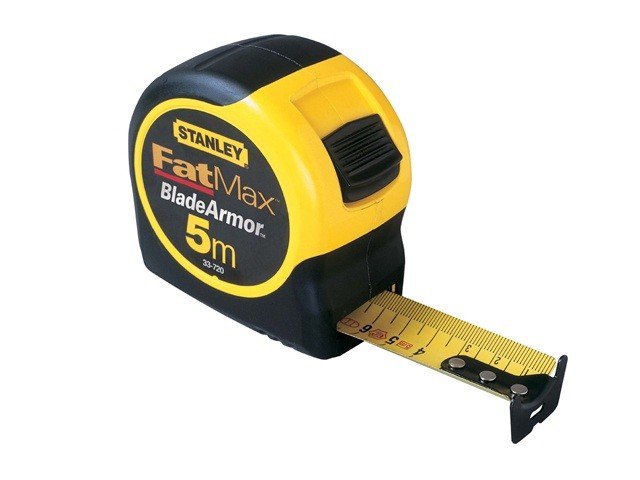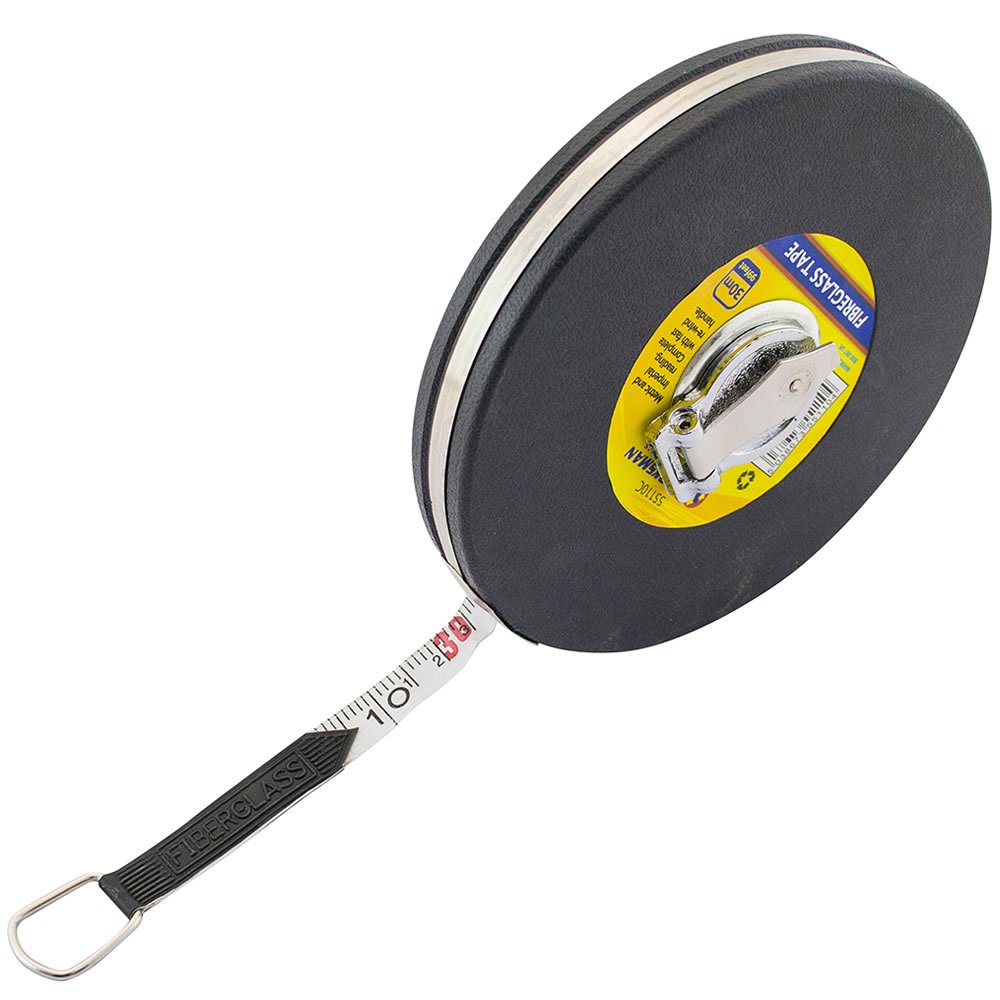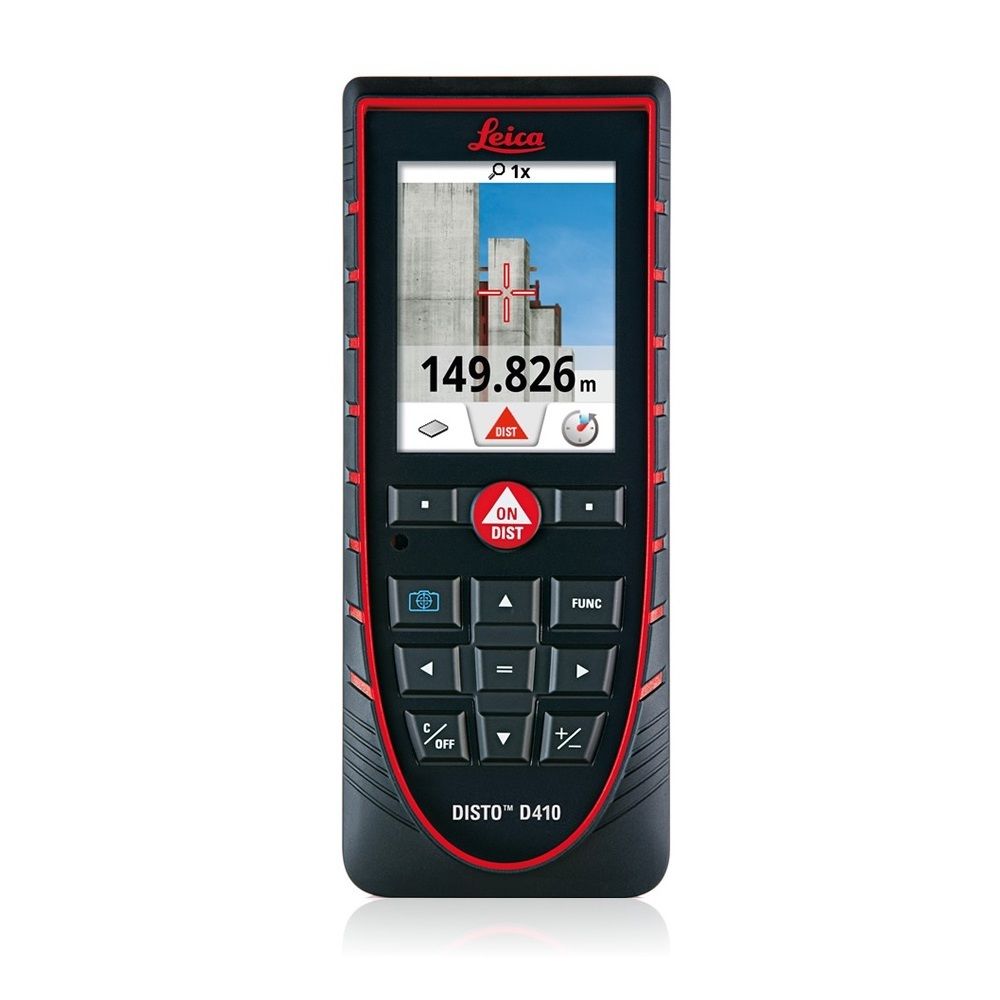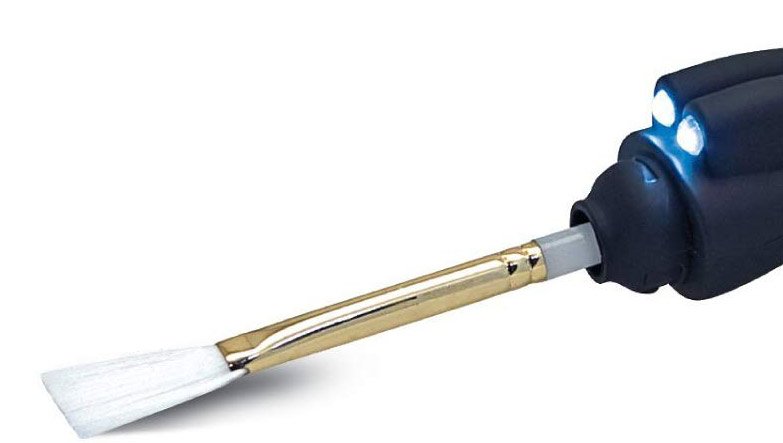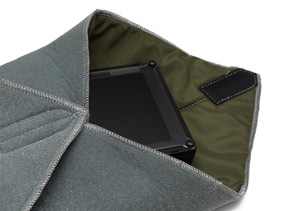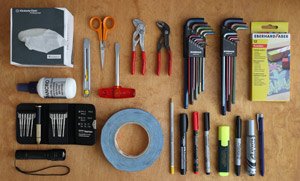In addition to all the skill, knowledge and experience that makes a good focus puller, there are some indispensable tools of the trade. If you are here, then you’ve probably already covered the basics, but just in case you want to double check, consult our 15 Camera Assistant Kit Must Haves guide. As with all aspects of filmmaking, new tools and devices aiding the work of focus pullers are constantly being developed and released. However, you will be hard pressed to find any self-respecting 1st AC without the following staples:
Tape measures
A tape measure is the focus puller’s signature accessory. While no dedicated film tape measures are produced, the whole range of construction tape measures can usually be found on any decently sized film set. The different types have different uses, and each assistant has their preferences.
Hard tape measure
The ubiquitous steel tape measure is by far the most common type you will see in the hands of a first assistant camera. You will typically see them protruding the tape measure from the camera to a stand-in or a helpful 2nd AC standing on the actor’s marked position. More experienced stand-ins would, upon seeing the 1st AC making a measurement, grab the end and bring it level to their eyes.
The most important quality that a focus puller looks for in a hard tape measure is it’s standout range, or how far the blade would protrude horizontally without snapping. A larger standout range allows the focus puller to take longer measurements without assistance.
Which one? The Stanley FatMax series of tape measures pictured above is the de facto industry standard. With 32mm wide blades, these tape measures boast a standout range of around 4m (or almost 13 feet). Get a dual scaled metric / imperial one, you never know what lenses you might get to work with.
As the tape will most likely live on your belt or chest pouch, it’s best to get a light one. The 5 meters / 16 feet model is perfect. For anything above, you will most likely want to use one of the other two distance measure options.
In a pinch? Any old tape measure you have kicking about will do for a start. If you are buying locally, get the widest blade one you can get, and test how far it will reliably stand out. The flimsier it is, the more you will need a helping hand once you get out further than an arm’s reach.
Soft tape measure
The soft tape measure, also known as a surveryors tape measure is the second most popular tool used by camera assistants. Compared to a hard tape, the soft one usually comes in longer lengths, typically around 30 meters / 100 feet. Most professional film cameras come equipped with a little hook or a post marking the exact location of the focal plane. This provides a place for the assistant to hook the end of the soft tape measure and walk with the spool to the various distances to be measured.
The surveyors tape provides very precise measurements, but it is a bit slower to use. Due to the ever increasing tempo on modern film sets, it is not as popular as it once was. There’s also the danger of somebody tripping over the tape while you are measuring, taking the camera down in the process. If you do use one, pay attention to your surroundings and warn any crew members that may run into it.
Another thing to keep in mind is that fiberglass tapes are prone to stretching with use. It’s a good idea to verify the condition of yours every now and then, using a laser distance meter or a longer hard tape.
Which one? There is no industry favourite soft tape model, so just get the one that looks sturdy enough. These tapes come in lenghts of up to 50m / 150 ft or more, but anything over 30m / 100 ft is an overkill. Because these tapes are generally used in construction and surveying, some models come with spiked ends instead of a hoop. Make sure you get one with a plain hoop like the one pictured above. Most models are dual scale, and as with the hard tape, it’s good to have.
In a pinch? There’s no real substitute for the soft tape, but the good news is that they are very cheap and plentiful. Most construction stores and hardwares shops stock them, so you’ve got no excuse not to have one in your toolkit.
Laser distance measures
Sometimes incorrectly referred to as laser tape measures (hint, no tape involved), the laser distance measures are an increasingly popular focus puller tool. They are the quickest way to take last-minute distance measurements before the camera rolls. A formerly expensive piece of kit, there is now a huge variety of models on the market to suit every budget.
Which one? If you are just starting out and want a budget option to add to your kit, just go for whatever base/mid-range model Bosch or Leica is on offer. They are reliable, typically have a range of over a 100 feet and can be had for under $100 brand new.
Higher up the range, we have models that solve the biggest laser distance measurement problem – daylight visibility. It’s next to impossible to spot the laser dot measuring outside on a bright sunny day. The manufacturers have designed a couple of ways to deal with this. Leica utilizes a built in camera with digital zoom in it’s X4, D810 and other higher end models. Bosch has also recently joined the camera game with the GLM400.
The second approach to daylight viewability is to use an optical sight operating much like a gun’s speed sight. Hilti paved the way here and is still a market leader with the PD-E and PD-I. Bosch have a highly rated viewfinder unit too, the GLR825.
In a pinch? Until you’ve gotten used to one, a laser distance meter is more of a luxury than anything else. However, due to the proliferation of technollogy, every hardware store seems to stock some sort of laser distance meter now. Cheaper ones seem to run for as much as a good quality hard tape. If you are not sure wether you want to invest in a higher end model, you might want to give one of the cheaper ones a go.
Sensor cleaning
If you are shooting digital, sooner or later you’re going to run into the issue of a dirty camera sensor. Swap a few lenses in a dusty room and you are good to go. Cleaning a camera sensor in the field is a somewhat controversial topic. Sensors (or their protective filters) are delicate stuff, and a twitch of the hand can turn a piece of dust into a disaster. Ask any rental tech and watch them cringe. Use your better judgement! Only attempt a clean if it’s absolutely necessary and you are 100% certain in what you are doing. However, if you do plan on being prepared for this, here’s what you are going to need:

Sensor loupe
All sensor dust troubleshooting begins with a sensor loupe. It’s a device designed to fit to the front of the camera’s lens mount and provide lit, magnified view of the sensor (or sensor protection filter) surface. Once you see what the issue is – dust, dirt, grime or something else, you can take appropriate steps to solve it.
Which one? The VisibleDust series of loupes, like the Quasar R 5x Sensor Loupe pictured above, is the most popular option. It has both white and red LEDs to provide maximum contrast. In addition, filters like polarizers can be attached to the loupe to further improve viewability.
In a pinch? While you can always try and attempt to use a regular magnifier and a flashlight, it’s not a good idea to fool around above an exposed image sensor. Get the real thing or don’t mess with this at all.

Blower
Once you’ve determined you have a dusty sensor, the first thing to try is to blow it off with a duster. Even if you find a smudge, a dried droplet or (god forbid) a fingerprint, the first step is to blow off any dust that may also be there. Any dust or grit left over when you attempt to wet-clean the sensor may scratch the coatings of the sensor or sensor filter.
Compressed air can may seem like a better option for this, but it’s best used by more experienced ACs. If you tilt or shake a can of compressed air (which is, in fact, anything but air) during use it can spit liquid propellant. The propellant then goes on to supercool the surface it’s on, which can be catastrophic for the delicate surfaces of the sensor or anti-aliacing filter. The rocket blower may no pack quite the same punch, but it’s by far a safer bet.
Which one? The Giottos Rocket Blower is one of the most common models. There are some models with brush bristles at the end of the nozzle, but these are of little practicle use. Unless kept pristinely clean and dust free, they may end up further contaminating the surfaces you want to clean.
In a pinch? Every camera store or bigger electronics outfit should have a blower in stock. Failing that, and if you don’t mind some awkward looks, you can hit the pharmacy and look for a hygienic douche, it’s known to work just as well.
Sensor brush
A sensor brush is the next step in the sensor cleaning process. A brush bridges the gap between the contactless cleaning of the blower and the full-on wet clean routine. Barring any smudges or spots, a brush can easily take care of any stubborn dust or lint particles that may hang on after the blower.
Which one? The VisibleDust Arctic Butterfly 724S Sensor Brush is the most popular option. It has a patented system that provides a static charge in the brush that helps it pick up the dust instead of pushing it around. Make sure you keep the brush bristles pristine, and always keep the protector cap on the brush unless you are using it. Any oil, dust or grime that ends up on the brush will go on to smear the sensor you are trying to clean up.
In a pinch? As with anything that touches the most sensitive (and expensive to replace/repair) area of your camera, a sensor brush is no place to cut corners. However, if you are in a tight spot, you can try your hand with the softest artist brush you can get your hands on. After a thorough cleaning and degreasing (isopropyl alcohol is good for this) a good quality sable hair paint brush can be used as a sensor brush. It will not have the static charge features of the VisibleDust, but it can still jar loose any stubborn pieces of dust. As with anything this delicate, use your best judgement and do these interventions at your own risk.


